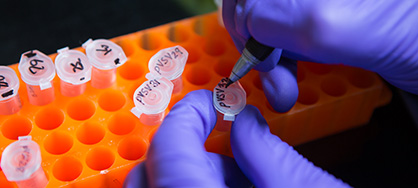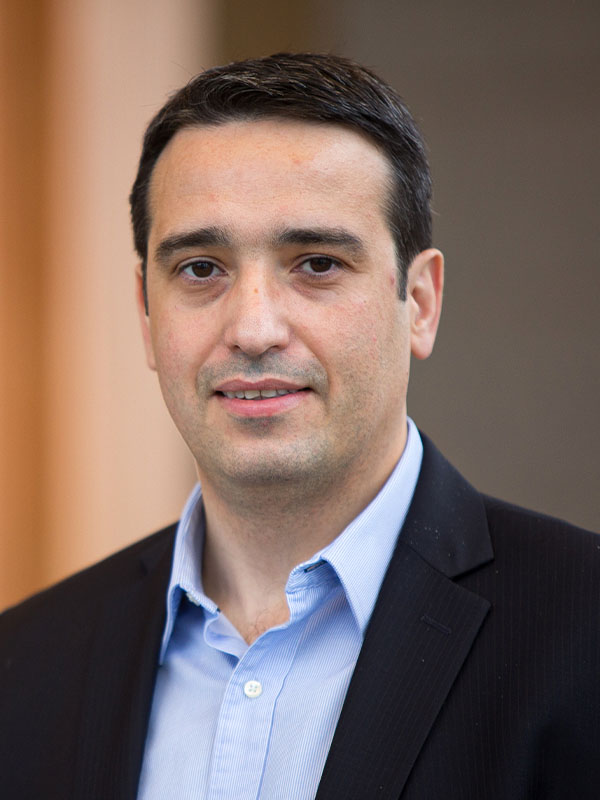
Research Highlights
Following Genetic Clues to Stop Pancreatic Cancer
Pancreatic cancer, the fifth most common cause of cancer deaths in the United States, presents a special challenge. It usually isn’t diagnosed until it’s well advanced—already present at distant sites and not curable with standard treatments. As with other cancers, pancreatic cancer’s evolution from localized tumor to metastatic disease is probably influenced by mutations that have accumulated in the cancer’s genome.

Harry Ostrer, M.D.To identify the genetic changes associated with metastasis, pathology department faculty members Alex Pearlman, Ph.D., Kim Cole, M.D., and Harry Ostrer, M.D., have built a cohort of pancreatic cancer cases from patients seen at Montefiore Medical Center, the University Hospital and academic medical center for Einstein. They are analyzing these cases using the latest generation of DNA array and sequencing technologies.
"Pinpointing genetic variants associated with metastasis could help tailor treatment and identify potential drug targets," noted Dr. Ostrer, professor of pathology, of genetics and of pediatrics at Einstein and director of genetic and genomic testing at Montefiore.

Evripidis Gavathiotis, Ph.D.But another challenge is that even diagnosing pancreatic cancer at an early stage does not always save lives. The primary tumor often can’t be safely or completely removed and drug therapies do not significantly alter the course of the disease.
Mutations in a gene called K-RAS are key drivers of tumor growth in pancreatic cancer. In fact, K-RAS is mutated in more than 90% of cases of pancreatic cancer. These K-RAS mutations ramp up the transmission of stimulating messages in a signaling pathway that causes cells to multiply. The result: excessive cell proliferation and tumor growth.
Evris Gavathiotis, Ph.D., assistant professor of biochemistry and of medicine, is trying to attack pancreatic cancer by interfering with this signaling pathway. Since efforts to develop drugs that inactivate K-RAS have not been successful, researchers have focused on proteins downstream from K-RAS in this signaling pathway. One of their main targets is the so-called RAF family of proteins that transmit the proliferation signal to the cell’s nucleus. Unfortunately, drugs developed to inactivate RAF are only effective transiently because, while they do suppress the RAF protein they targeted, they create a second, more active version of RAF in the process. The new version of RAF, known as a dimer (i.e., consisting of two structurally similar RAF molecules attached to each other) causes an increase in pro-proliferation signaling.
Dr. Gavathiotis, and Xiomaris Cotto-Rios, Ph.D., a postdoc in his lab, are identifying compounds that can block formation of this RAF dimer. Ideally, such a drug would arrest, shrink and eliminate primary and metastatic pancreatic tumors that depend on mutant K-RAS activity.
They are testing drugs approved for clinical use for other indications to determine if they can identify one that also blocks formation of the dimer. "We’re hoping to find one that can be tested and used with patients quickly," said Dr. Gavathiotis. What is particularly intriguing about this approach is that the same strategy could be used in the treatment of melanoma that develops resistance to B-RAF inhibitors by the formation of the same type of dimer.
Posted on: Friday, September 13, 2013



